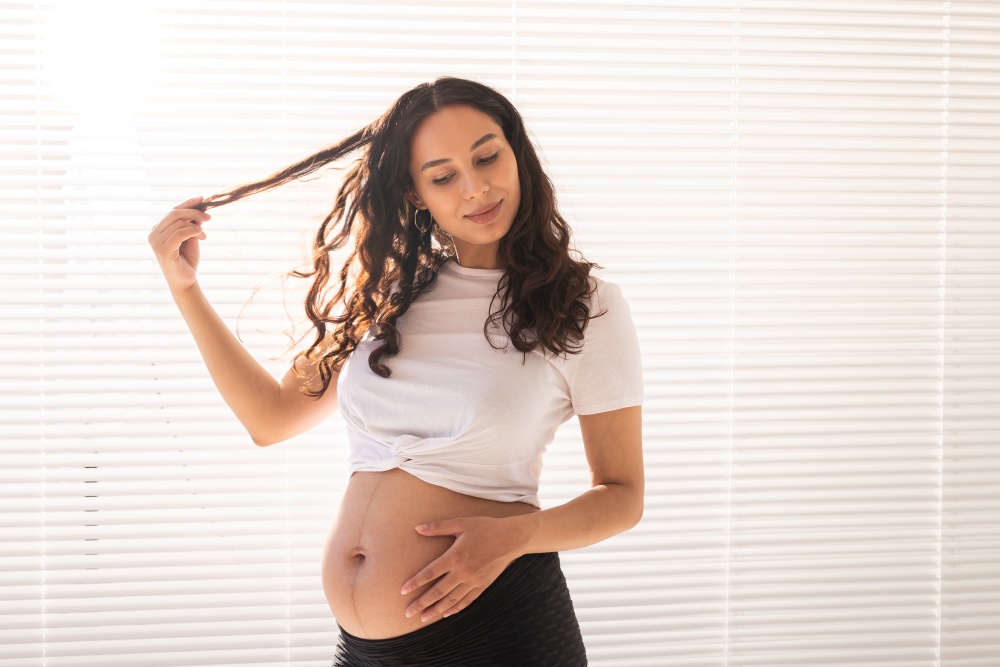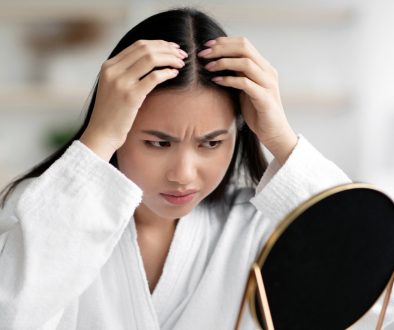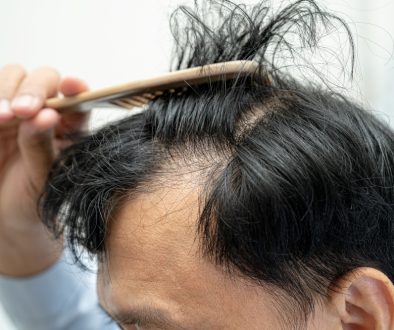Understanding Postpartum Hair Loss: A Comprehensive Guide for New Mothers
Welcoming a baby marks a significant milestone—but alongside the emotional highs, many new mothers encounter changes in their bodies they weren’t expecting.
One of the more surprising developments? Noticing an increased amount of hair on your brush, pillow, or gathering around the shower drain.
This type of hair loss, also known as postpartum hair loss, is a common and usually transient response to the hormonal shifts that follow childbirth.
While the shedding can feel alarming, it’s typically part of the body’s natural process of returning to balance. Still, for many women, the abruptness and volume of hair fall can be distressing—especially when it changes how you see yourself in the mirror.
If you’ve started noticing your hair thinning a few months after delivery, you’re not alone—and it’s worth understanding what’s going on behind the scenes.
It’s Normal, Mama! Reassuring Facts About Postpartum Hair Loss
Finding strands of hair coming out in handfuls can be unsettling—especially when everything else in your life already feels like it’s in flux.
But as mentioned, here’s what’s important to know: this kind of shedding is entirely normal after giving birth.
Many new mothers experience this temporary phase a few months into postpartum, often right when routines are just starting to settle. This is because, as your body gradually shifts out of its pregnancy state, hormonal changes—particularly the drop in oestrogen—can prompt an increased number of hairs to shift into the resting phase, eventually leading to noticeable shedding. It’s not a sign that something is wrong, and it’s rarely permanent hair loss.
The Science Behind the Shedding: What Causes Hair Loss After Giving Birth?
To understand why postpartum hair loss happens, it helps to first understand the natural rhythm of your hair’s life cycle. Hair grows in phases—anagen (growth), catagen (transition), and telogen (rest). At any given time, most of your hair is in the growing phase, with a smaller portion resting before eventually shedding and making way for new strands.
During pregnancy, the transition of hair into the resting phase is slowed. However, once the baby arrives, hormone levels—particularly oestrogen—drop significantly. This sudden shift pushes a larger number of hairs into the resting phase at the same time, eventually leading to those hairs shedding, sometimes all at once.
The Role of Hormones: How They Influence Postpartum Hair Growth

While expecting, elevated oestrogen levels help extend the growth phase of the hair cycle. This means fewer strands enter the shedding stage, which is why many pregnant individuals notice their hair feeling thicker or growing more rapidly during that time.
However, after childbirth, oestrogen levels begin to drop—shifting back toward their pre-pregnancy baseline. As this happens, the hair that remained in the prolonged growth phase starts to transition en masse into the resting phase. Roughly 2 to 4 months later, that buildup of resting hairs begins to shed, which can feel sudden and significant.
Progesterone levels also shift postpartum, and these changes—alongside disrupted sleep, physical recovery, and stress—can all influence hormone balance and scalp health. Nutritional factors, especially iron and vitamin D levels, may also contribute to how your hair grows and sheds. In some cases, underlying issues like postpartum thyroiditis can further affect the cycle. In some cases, genetics may also play a role in how dramatic the shedding appears.
Timeline of Shedding: When Does Postpartum Hair Loss Typically Start?
Most new mothers begin to notice postpartum hair shedding between two to four months after giving birth.
However, do note that the extent of hair loss can vary from person to person. For some, the shedding is gradual; for others, it may feel more dramatic—especially if their hair grew thicker or longer during pregnancy.
Duration of Hair Shedding: How Long Does Postpartum Hair Loss Last?
For most women, this noticeable shedding begins a few months after delivery and gradually tapers off within six months.
That said, recovery timelines can differ. Some may notice shedding stretching out closer to a year—especially if other factors like stress, poor nutrition, or existing health conditions come into play. If the hair loss feels excessive or continues well beyond twelve months, it may be helpful to check in with a medical professional to explore potential underlying causes.
Hair Transplants After Pregnancy: Safety and Timing
Many new mothers wonder what helps with postpartum hair loss and whether more intensive solutions are necessary. And for those considering longer-term options, hair transplants may eventually come into the picture—but timing matters.
While generally regarded as a safe procedure, it’s often advised to wait at least 6 to 12 months after childbirth. This window allows hormone levels to settle, giving your body a chance to recalibrate naturally.
In the meantime, non-surgical approaches such as scalp care routines or hair growth treatments may help manage shedding and support the regrowth phase. However, if hair density hasn’t improved after a year or if areas of visible thinning remain, a consultation at a hair transplant clinic in Singapore can help determine if you are an ideal candidate for a hair transplant.
Choosing the Right Approach: Hair Transplants vs. Natural Remedies
Not every case of postpartum hair loss needs surgical intervention. For many women, hair volume returns gradually through non-invasive care and supportive lifestyle adjustments. Consider the following:
1. Maintain a Healthy Diet
Nutrients like iron, biotin, zinc, and vitamin D support the hair growth cycle and help reduce ongoing shedding. A balanced mix of protein, leafy greens, whole grains, and fresh fruits can contribute to a more stable recovery—inside and out. Hydration is equally important, so be sure to drink enough water throughout the day.
2. Take Nutritional Supplements
In some cases, food alone may not provide all the nutrients your recovering body needs. That’s where supplements come in—if recommended by your doctor. Biotin, folate, iron, and zinc are often suggested to support hair regrowth. These may already be part of your postpartum care plan, but always check with a medical professional before adding anything new to your routine.
3. Reduce Stress
Elevated stress levels can further disrupt hormonal balance, prolonging hair loss. Therefore, techniques like mindfulness, deep breathing, or gentle movement can help restore calm. You can also consider trying non-invasive methods like scalp massages or low-level light therapy (LLLT). While these approaches require time, they offer a gradual, less disruptive path to recovery.
Navigating Postpartum Hair Loss with Patience and Care
Postpartum hair loss can feel discouraging—but it’s often a temporary part of recovery. As your body recalibrates, shedding usually slows down with time. So, rather than rushing for fixes, focus on daily choices that support your overall well-being. But if you’re wondering how to prevent hair loss after pregnancy or if the shedding feels prolonged or excessive, it’s worth checking with a hair transplant clinic to explore your options.
Book a consultation today to better understand your hair recovery options.




